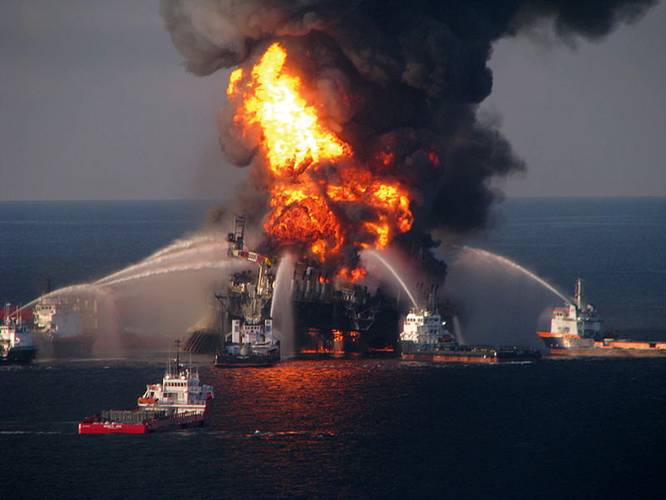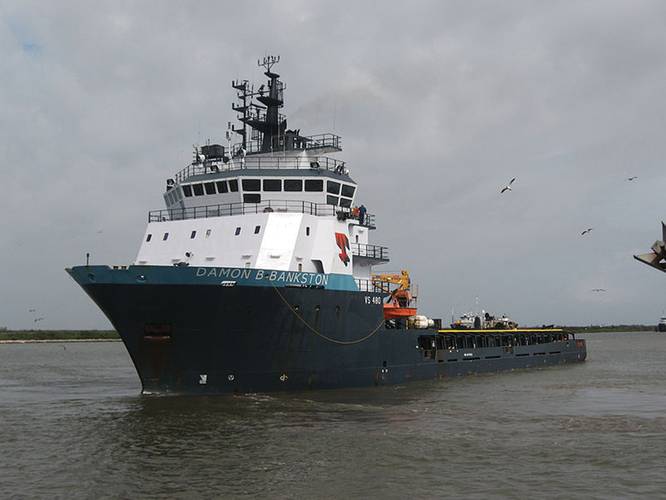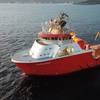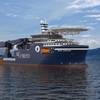The Macondo Spill Trial
Offshore U.S. Gulf energy operators have already paid a steep price; more pain could come.
Drilling in the Gulf of Mexico is now close to levels seen before the April 2010 Macondo spill that took 11 lives and caused the nation’s worst offshore oil spill. Almost two years after the disaster, companies operating in the Gulf are trying to comply with safety requirements finalized last year, according to the Bureau of Safety and Environmental Enforcement. BSEE’s new safety rules for offshore drillers set standards for casing and cementing, third-party certification and verification; blowout preventer capabilities, testing and documentation and well-control training. BSEE now requires documentation from rig operators that its contractors, including offshore supply vessel owners, have a Safety and Environmental Management System or SEMS program in place.
But offshore drilling remains inherently dangerous, and companies are in it to make a profit. The bigger ones report to shareholders. Testimony in the Gulf spill trial, underway in U.S. District Court in New Orleans, is alleging that offshore operators sometimes cut corners, putting profits above safety.
Before the spill, government fines for violations were considered a cost of doing business. And even with new regulations and heightened awareness about safety, a temptation to defer maintenance on vessels and equipment remains. Fines for failing to comply in a timely way arguably weren’t particularly burdensome before the 2010 spill and still aren’t.
Trial Examines Profits vs. Safety
In an admiralty trial that began on Feb. 25 without a jury, U.S. District Judge Carl Barbier in New Orleans is deciding blame between Transocean, BP and Halliburton in the Macondo well explosion. Swiss-based Transocean, the world’s top offshore drilling contractor, owned the Deepwater Horizon rig at the well. U.K.-based BP PLC leased the site from the feds and operated the well. Halliburton, headquartered in Houston and Dubai, was contracted by BP to provide cement.
Judge Barbier also considered liability on the part of Cameron, the maker of the blowout preventer sold to Transocean, and M-I LLC, which was contracted by BP to provide drilling fluids. But Barbier dismissed charges against Cameron and M-I in mid-March, saying he’d heard nothing to indicate they contributed to the blowout.
Testimony about what happened on the Deepwater Horizon, a submersible drilling unit, has focused on negligence in a dangerous, offshore environment. In the accident, workers prepared to temporarily cap the Macondo well more than 4,000 feet under water when it exploded.
On March18, Geoff Webster, the plaintiffs’ expert witness on the Horizon’s seaworthiness, told the court that delayed maintenance had been a growing problem. Rig audits “clearly show that there were not enough people on board, there was not enough equipment for spares and the rig was going downhill,” he said. The rig was in trouble mechanically, hydraulically and probably electrically, Webster said. Maintenance was behind on everything from pumps and alarms to lifeboats. The rig’s blowout preventer hadn’t been recertified in nine years though certification was required every five years by the federal Mineral Management Service and by Cameron, the BOP’s manufacturer.
The rig’s maintenance duties were being closed out or checked off a list though the required tasks often weren’t performed, Webster said. Audits showed “there is no follow-up going on. There is no follow-up by the crew themselves, and there is no follow-up by the shore maintenance people, the rig manager and then ultimately the designated person,” he testified.
When asked what he thought of the vessel’s maintenance history, Webster termed it “reckless neglect.” He said, “This rig should have gone to a shipyard, at which time all these items could have been taken care of. The vessel had been running for nine years without any major overhaul or any dry dock period.”
In September 2009, Transocean engaged Lloyd’s Register Group, a maritime and risk-management organization, to study five of its drilling rigs, including the Deepwater Horizon—following four deaths on four of its rigs over 92 days. In a related July 2010 report, Lloyd’s pointed to “a fundamental lack of hazard awareness” within Transocean’s North America division.
In his mid-March testimony at the trial, Webster was asked about a comment from a Transocean employee included in Lloyd’s analysis of the company’s North American rigs. The employee had said “run it, break it, fix it. That’s how they work.” Transocean was more interested in production than safety, Webster told the court. “When the rig is idle, it’s not making money,” he explained. “When the rig is in dry dock, it’s not making money. So they try to keep it out there as long as they can.”
Lloyd’s also found “a significant level of reported mistrust between the rigs and the beach” at Transocean’s North American operations. Webster said, “That can lead to disaster because the crew are not telling the shore people exactly what’s going on; they are not reporting near-miss accidents; they are not reporting major hazards.” He also said “the crew is afraid to report accidents [and] nonconformities to the office for fear of being fired.”
BP Knew of Problems on Transocean’s Rig
In his opening statement at the start of the trial, James Roy of Domengeaux Wright Roy & Edwards, LLC in Layette, La., a plaintiffs’ lawyer representing individuals and businesses, pointed a finger at BP, Transocean and Halliburton.
Roy said BP was aware of design and maintenance problems on the Deepwater Horizon but nonetheless chartered the rig in late 2009 to finish the Macondo well. BP’s executives pressured BP rig management to reduce costs by cutting corners and rushing through work. Roy said “Macondo was described variously by BP personnel as the well from hell, a nightmare well and a crazy well.” He said a push to complete the well caused so many changes to plans that John Guide, BP’s wells-team leader in Houston, said three days before the disaster “the well-site leaders have finally come to their wits’ end.”
Roy said BP’s executives created a culture that valued profit and production over safety. From 2008 to 2009, BP management slashed costs by $4 billion and laid off 20% of its world workforce, with plans for another $1.4 billion in cuts in 2010.
Tidewater’s Damon Bankston, Working Next To Rig, Saved Most of Its Crew
The Deepwater Horizon was located 41 miles off Louisiana’s coast in Mississippi Canyon block 252, with a 126-member crew when it exploded on April 20, 2010. Nine Transocean personnel and two M-I employees died. As things went terribly wrong on the rig, Tidewater’s supply vessel, Damon B. Bankston, was anchored alongside it, ready to help. The Damon B. was pumping heavy drilling mud from the rig through a hose when a flood of mud poured off the rig’s drill deck, according to testimony from the vessel’s captain Alwin Landry to a federal panel in May 2010. He was advised by coworkers that evening to disconnect the hose and move his vessel away from the rig.
In his 2010 testimony, Landry said he heard a loud hiss that lasted for 30 seconds or more. It was later attributed to a surge of methane rushing up the drill pipe to the rig’s deck. A distress call went out from the rig’s radio. An explosion occurred at 9:50 p.m. As fire enveloped the rig, Deepwater Horizon workers rushed to life boats and some of them plunged into the sea, Landry said. The rig’s two lifeboats cleared the burning rig but a smaller life raft couldn’t get free. A Damon Bankston rescue boat pulled up next to the trapped life raft and handed its crew a knife, which they used to cut free, Landry said. Eventually, Damon B. Bankston’s crew rescued 115 workers from the rig.
Outlook: Safety Stepped Up, but Enforcement not Enough
Last month, Eileen Angelico, New Orleans-based spokeswoman for BSEE, said that following the April 2010 explosion, “offshore operators are required to ensure that their contractors have a Safety and Environmental Management System or SEMS program in place. The two new regulations published since Deepwater Horizon are the Drilling Safety Rule and the Workplace Safety Rule or Safety and Environmental Management System.” She added “I’m not aware of any provisions with the Drilling Safety Rule that affect OSVs.”
BSEE doesn’t make demands directly on contractors, she said. “BSEE requires documentation or demonstration from the operator that its contractors exercise a Safety and Environmental Management System program.”
Meanwhile, the offshore enforcement process is more stringent than it was before the Macondo blowout, but not greatly so. Inspectors continue to conduct mostly scheduled reviews of drilling rigs, and they issue incidents of non-compliance for violations--starting a process that can lead to civil penalties but seldom does. Companies have several opportunities to appeal citations and proposed penalties.
Civil penalties are capped at $40,000 per incident a day – an amount some say is not enough for oil companies spending up to $600,000 a day to rent a drilling rig.
The Macondo tragedy has already cost BP and Transocean dearly. BP has spent or committed over $37 billion for cleanup, restoration, payouts, settlements and fines (so far), still facing billions more in. On January 29, BP pleaded guilty in Eastern District Court of Louisiana to 14 criminal counts, including 11 felony counts of manslaughter, and it agreed to pay $4 billion in penalties in the biggest U.S. criminal resolution ever. On Feb. 14, Transocean was fined $1 billion after pleading guilty to one misdemeanor count of violating the Clean Water Act, and agreed to pay another $400 million in criminal penalties.
Looking Forward
Phase One of the spill trial is expected to continue to late April, barring a settlement before then. A Phase Two trial could start in September to examine spill-response evidence and the amount of oil that escaped the well. A third phase, probably in 2014, will consider environmental and economic damages. Energy producers will be watching all of it closely, benchmarking their operations and trying to ensure that they do not suffer a similar fate. More than being safe and environmentally correct; it’s also good business.
(As published in the April 2013 edition of Marine News - www.marinelink.com)
















